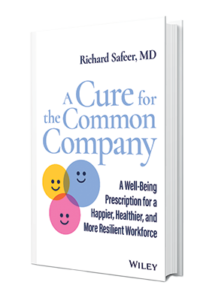I didn’t become a coffee drinker until my mid-40s. I might have had four or five cups in the seven years it took me to finish medical school and residency training.
Coffee was a perk for those at the Johns Hopkins Health Care campus where I worked. I would notice the gathering around the coffee machine on my way to get lunch. Once, when I badly needed to stay awake, I decided to give coffee a try again.
With a little help from some non-dairy creamer, this time my tongue gave approval. With time, I started to develop a social circle with the other coffee drinkers who would take their breaks at around the same time. Without realizing it, I was becoming a part of a subculture that liked coffee in the late morning.
This is an example of the power of norms in the workplace. Despite more than 40 years of not drinking coffee, my new workplace at the time steered me toward this habit.
What are norms?
We’re all social primates and our evolutionary instincts move us toward tribes where we feel like we belong. In modern workplaces, those tribes are sometimes defined by preferences (like those who walk at lunchtime), but more often they are the result of being on the same work team. Common likes and dislikes shape group behavior, beliefs, and attitudes or culture. There are five other building blocks that influence the wellbeing culture of your team and workplace.
Norms are behavioral expectations or “the way we do things around here.” While it’s not likely you would have given much thought to norms, they are all around you within your organization. Norms influence the way you dress, conduct meetings, greet each other, share food, introduce new colleagues, watch, and play games, and reply to emails after work hours.
Norms are behaviors that are done without much thought; practices that have existed in groups for long periods and have become so ingrained that it would be difficult to visualize the place without them.
The Power of Norms
It’s not just the behaviors of your colleagues or friends that affect you. Even the behaviors of their friends’ friends would influence you, as Nicholas Christakis and James Fowler state in their book, Connected.
Our cultures shape our behaviors. Our actions are synchronized to the behaviors of those around us. They become the norms that influence us, which explains why people whose friends regularly exercise tend to stay fit.
Similarly, since deviating from the norm might lead to an exclusion from the group, we may continue performing some behaviors even if we know that they’re bad for us. A prime example of this would be the consumption of unhealthy foods and beverages.
How to Change Norms
The good news is that norms can be intentionally influenced to create a workplace culture that prioritizes employee health and wellbeing. In my experience, both with Johns Hopkins and other organizations, I’ve found that for norms to align with wellbeing, you need these factors to work in cohesion:
Organizational intent and support: Changing norms mean changing behaviors, which is difficult without support and encouragement. In this case, the support needs to come from the organization on as many levels as possible. I‘ll discuss a variety of ways that support the adoption of healthy norms in an article on culture connection points.
Identify the norms: You must identify the norms you want to change and those you want to encourage. Some unhealthy norms might be easier to identify, like smoking. But others, like not asking for or expecting colleagues to help, could be tricky. Ensure that you include your team in the discussion about which norm to address.
Involve the employees: Change is easier when employees are invested in the process. It’s important for everyone to express their health and wellbeing priorities. By having this conversation, teams can find common goals, which can then turn into a concerted effort to adopt healthier behaviors and attitudes. Without a common interest in addressing unhealthy norms, it will be difficult to change the team culture.
Lead by example: Leaders will have to walk the talk when trying to enable healthy norms. Take the stairs if you want others to do so. Don’t encourage or glorify those who leave late and miss out on the much-needed seven to eight hours of sleep. Don’t call or email colleagues after office hours or during holidays. In addition to being a role model, leaders need to find ways to remove barriers to adopting healthy norms. Recognizing those on the team who would have adopted healthier practices is another great way for leaders to elevate the importance of wellbeing. Without the active involvement of leadership, unhealthy norms are difficult to replace.
Like the coffee drinkers of Johns Hopkins, every office has subcultures. Interestingly, these units have individuals with disproportionate influence over others. Since others tacitly admire them, these ‘influencers’ can sway group consensus toward or away from healthy norms. Appeal for their support before undertaking the full effort.
Norms are a crucial part of the six culture-building blocks needed for employee health and wellbeing. But the approach needs to be tailored to the needs, traditions, and existing behavioral patterns of teams and organizations.
Which norm will you shape on your team? Which wellbeing norms are your organization trying to support? Which ones are being discouraged?
More content on wellbeing culture at RichardSafeer.com and on LinkedIn. In the meantime, if you’ve helped shape a healthy norm in your workplace, I would love to hear about it. You can post it in the comments, or if you prefer some privacy, you can message me directly. If you approve, I might use your story in one of my future presentations or seminars!


